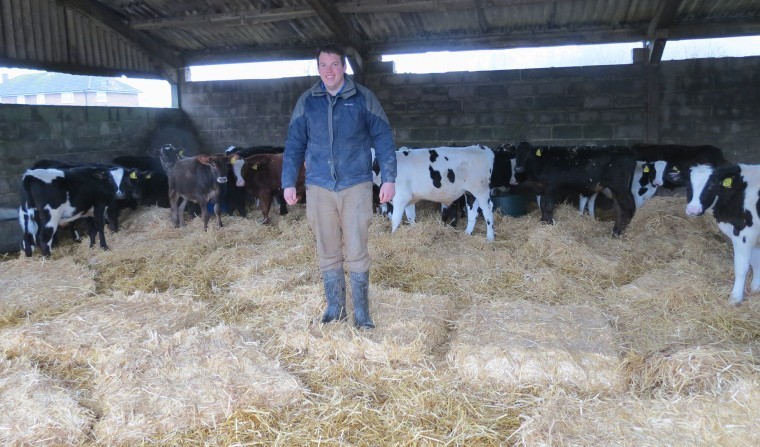After a two year stint working in Australia and New Zealand, Dan Luff returned home to Hampshire determined to do something else as well as cattle farming.
Before going down under, he had completed a three year agriculture degree at Harper Adams University with a one year break working on fresh produce in Wales.
But five years ago, when he was 24, Mr Luff hit on an idea for a business which turned over £4 million in livestock last year. “We were selling some cattle and in the South East, we don’t have that many markets,” Mr Luff said. “It costs a lot of money to transport livestock to market and when you get there, you don’t necessarily know what price you are going to get for your stock.”
Sometimes, it can cost as much as £30 a head to take the animals to market. Once they are there, the animals need to be sold because £30 out of the margin is most of the profit gone.
“I began thinking about why we are not advertising our stock online for sale.” Some research showed there was no dedicated website for livestock trading and no auction based system. Luckily, Mr Luff knew Jamie McInnes, a friend from school who is a web developer.
Over the next one and a half years, Mr Luff and Mr McInnes built the SellMyLivestock website and made it as efficient as possible before launching in June 2014. Following a successful publicity campaign, the numbers using the site took off and it has gone well since.
“It really took off in January last year when we discovered the use of social media, Facebook and Twitter. Now we have more than 20,000 social media followers across Facebook, Twitter, Instagram and the rest.” There are 3,500 farmers from England, Scotland and Wales using the site and there was a peak last September of 350 active listings on the site of stock for sale. There are a lot of classified advertisements, but a few auctions are run as well. “If farmers don’t necessarily know the price they want for their stock, they can have an auction. It’s very much like eBay – they create the auction themselves by taking photographs of the stock and asking people to bid on line over a set period. They can set a reserve price and – most importantly – buyers can go and see the stock before they are sold.”
“It can be risky dealing with farmers you don’t know,” Mr Luff said. “So our secure payment system guarantees the payment if someone is selling stock, and it protects the buyer if there is something wrong with the stock – if the animals don’t turn up, for example.” The site is only for sheep, pigs and cattle – it is not a general market place for machinery and everything else.
The business is about to launch an app which allow farmers to create listings on their mobile ‘phones. “They’ll be able to go in the shed, take a photograph of stock with the phone, create a listing for it and upload it to the site via Wi-Fi. I think that will make it much easier for farmers to create a listing.”
More than 200 investors have recently provided £150,000 of investment in amounts between £10 and £25,000 via crowd funding on the internet. “It’s an exciting business and we’re hoping to double the value of our livestock turnover this year.” Nick Shepherd, a former partner in Deloitte, has just been appointed chairman, and Max Prangnell does the publicity.
Based on his experience with SellMyLivestock, Mr McIness has set up another site called Graindex with Andrew Huxham, an arable farmer based near Chichester in West Sussex. This is an online market place for combinable crops which was launched in September, and about 500 farmers are signed up already.
About 70% of the UK buying market – the big four merchants: Openfield, Gleadell Agriculture, Glencore Grain and Nidera UK – have signed up to the site. “It’s a price comparison site for grain and there are two trading periods a day – one from 10am until 12pm and one from 2pm until 4pm. At the end of that there is a 20 minute decision period to choose which is the best deal for you. You don’t have to accept the highest bid – or you don’t have to accept any bids.” The site also offers farmers all the ex farm data from every trade which is logged: they can’t see the identity of the trader, but they can see what it was, where it was done and how much it sold for. “For farmers, that is really important data to help them sell at the right time.”




